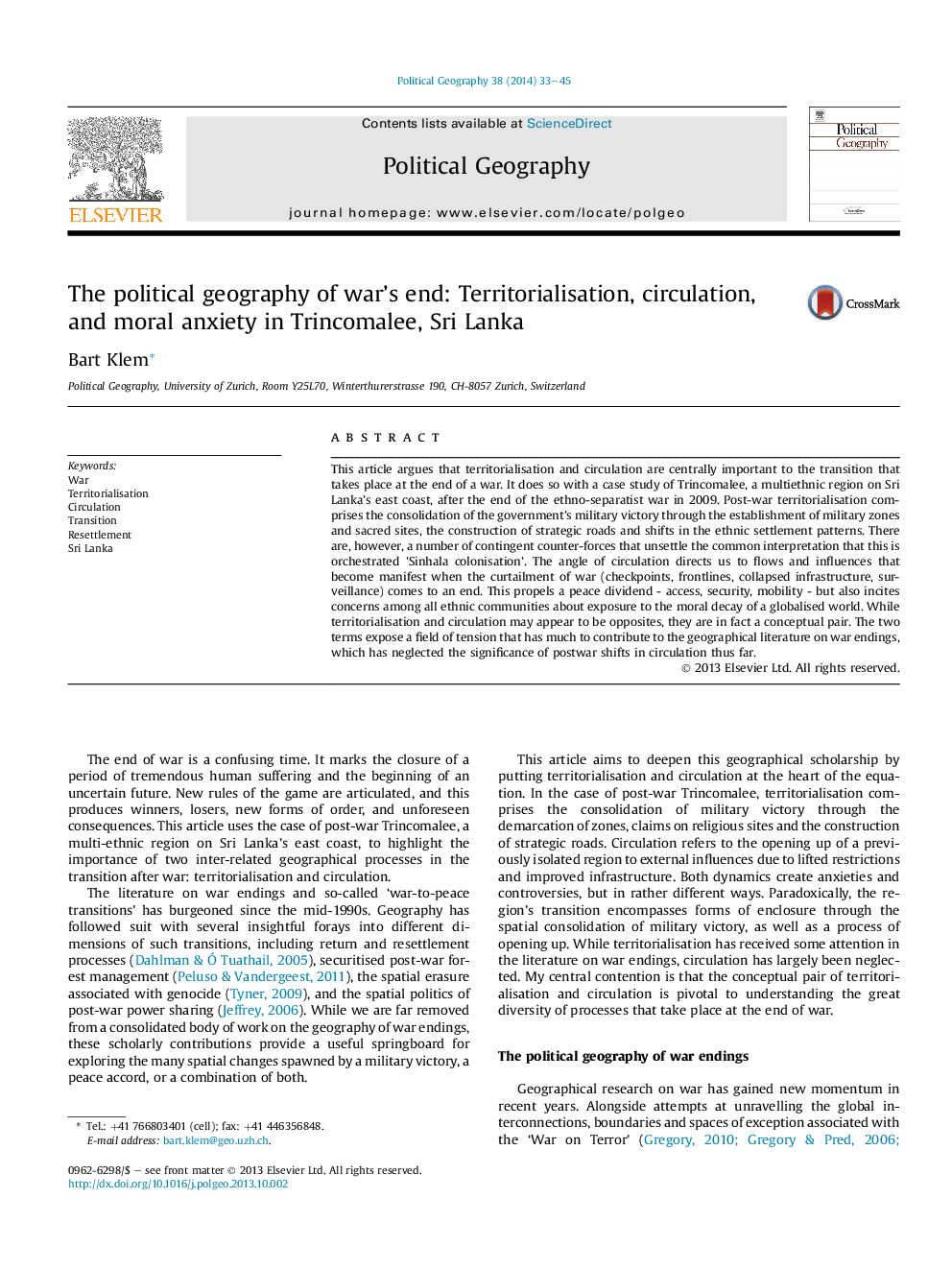| Article ID | Journal | Published Year | Pages | File Type |
|---|---|---|---|---|
| 1061922 | Political Geography | 2014 | 13 Pages |
•This article introduces the analytical pair of territorialisation and circulation to geographical debates on war endings.•It uses detailed empirical analysis and up-to-date maps to explore these two concepts in the context of eastern Sri Lanka.•The vantage point of territorialisation highlights forms of post-war hegemony, which resonate with observations elsewhere.•The vantage point of circulation opens up an analytical terrain that has been neglected by the literature so far.
This article argues that territorialisation and circulation are centrally important to the transition that takes place at the end of a war. It does so with a case study of Trincomalee, a multiethnic region on Sri Lanka's east coast, after the end of the ethno-separatist war in 2009. Post-war territorialisation comprises the consolidation of the government's military victory through the establishment of military zones and sacred sites, the construction of strategic roads and shifts in the ethnic settlement patterns. There are, however, a number of contingent counter-forces that unsettle the common interpretation that this is orchestrated 'Sinhala colonisation'. The angle of circulation directs us to flows and influences that become manifest when the curtailment of war (checkpoints, frontlines, collapsed infrastructure, surveillance) comes to an end. This propels a peace dividend - access, security, mobility - but also incites concerns among all ethnic communities about exposure to the moral decay of a globalised world. While territorialisation and circulation may appear to be opposites, they are in fact a conceptual pair. The two terms expose a field of tension that has much to contribute to the geographical literature on war endings, which has neglected the significance of postwar shifts in circulation thus far.
